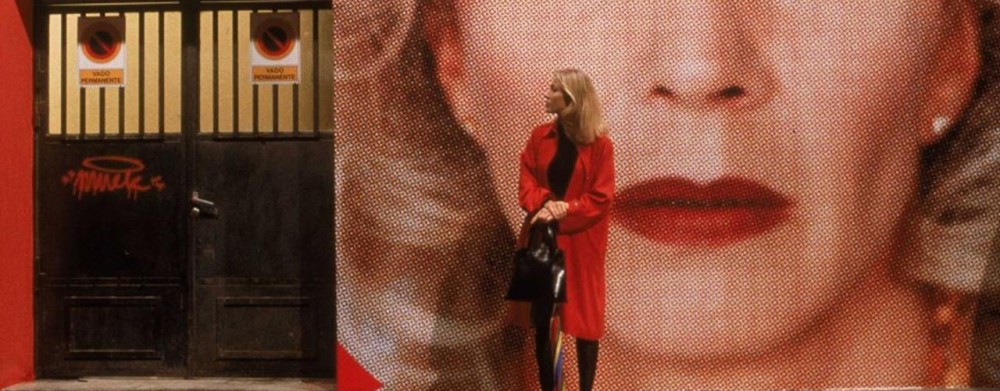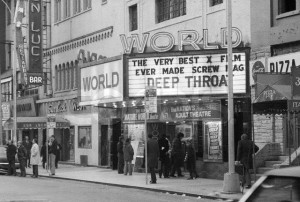Author Archives: Kristina Jacobs
Peep Show and Porn Spectatorship
Starting from Prof. Herzog’s point yesterday about the vulnerability of the peep show viewer’s body, I’d like to discuss that vulnerability in contrast to the anonymity of the viewer in a porn theater. Since both were staples of Times Square’s sex industry wonderland, I’m interested in the different viewing experiences and the relationship between the viewer and the actors on film. As Prof. Herzog pointed out, in a peep show the exposed female body would actually be fairly protected, literally placed in a box and only available for one person’s view. The peep show patron, on the other hand, would be vulnerable with his or her body on display. As I understand it, porn theaters gradually started replacing peep shows around the 1960s and 1970s. In the more traditional Metzian structure of theatrical apparatus, the viewer’s body is hidden in a dark room, while the film actors are fully on display on screen. The peep show viewer’s body (and eyes) are placed outside the entire apparatus itself, breaking with Metz’s argument for the viewer as a part of the apparatus: the spectator is the searchlight (which also duplicates the camera) as well as the screen (which also duplicates the film strip); Metz deems this the “mirror-chain” (824-5). Since the peep show removes the spectator from the apparatus and prevents the spectator from looking at himself looking at the screen (as in Metz’s formulation), perhaps the anonymity of the peep show viewer is actually less anonymous than the porn theater spectator who, though situated in a dark room, sees himself reflected on screen.
Foucault, Auteurism, Science
Foucault argues that the difference between discourse and science is that in discourse a “proposition’s theoretical validity” is defined in relation to the work of the founders whereas with scientific theories its validity is defined in relation to what physics or cosmology actually is (116). So, the founders of discursive theories (Freud, Lacan) originate and the founders of scientific theories (Galileo, Newton) discover. It may be interesting to think about this scientific aspect: for Foucault it is distinct from discourse and scientific theorists are not authors (since authors have to put forth ideas that can be studied, discussed, contradicted, expanded, etc. forever). But what about those filmmakers that invented new techniques and technology? Could they be considered authors or did they simply discover a scientific fact that already existed? I think in general technological innovations can contribute to a director’s position as auteur–for example, Orson Welles’ development (although not discovery of) deep focus in Citizen Kane. To what extent can the invention or discovery of technological innovations in cinema contribute to auteurism?
Kracauer and History
Kracauer argues in “History and Fantasy” that the filmmaker may go to the “limit” (81) in portraying the peculiar modes of a certain historical era. The practical implications of historical cinema are interesting to me here: what about when we add on a layer of distance; that is, what is it like for people in the present day to watch a black-and-white silent film made in the early twentieth century that depicts even more distant events? Does the time between today’s era and that of Gance’s Napoleon, for example, become another aspect in the historical portrayal? For me, historical films made closest to my own era are the most “realistic” depictions of history. Watching a film like Napoleon I forces me to consider the limitations of cinema at that time as well as the lack of color and sound. So when Kracauer stresses shifting the emphasis from history proper to camera-reality and posits that Joan of Arc’s face is located in a kind of no-man’s-land (80) through use of the close-up, it makes me wonder how we today experience that face, through the double temporal distances of 2010s → 1920s and 1920s → 1400s. Does that extra layer cause problems for our reception and interpretation? Could or do we see Joan of Arc’s face as nowhere but rather very firmly in and of the 1920s, as well as the 1400s and the 2010s? Can mere technological innovation between then and now diminish the timelessness of her face?



